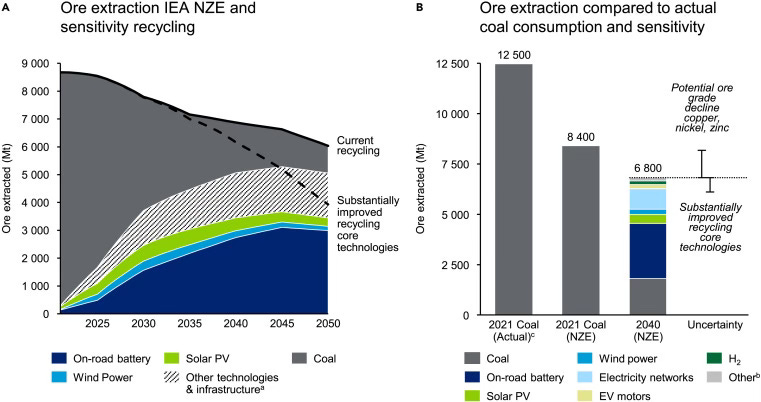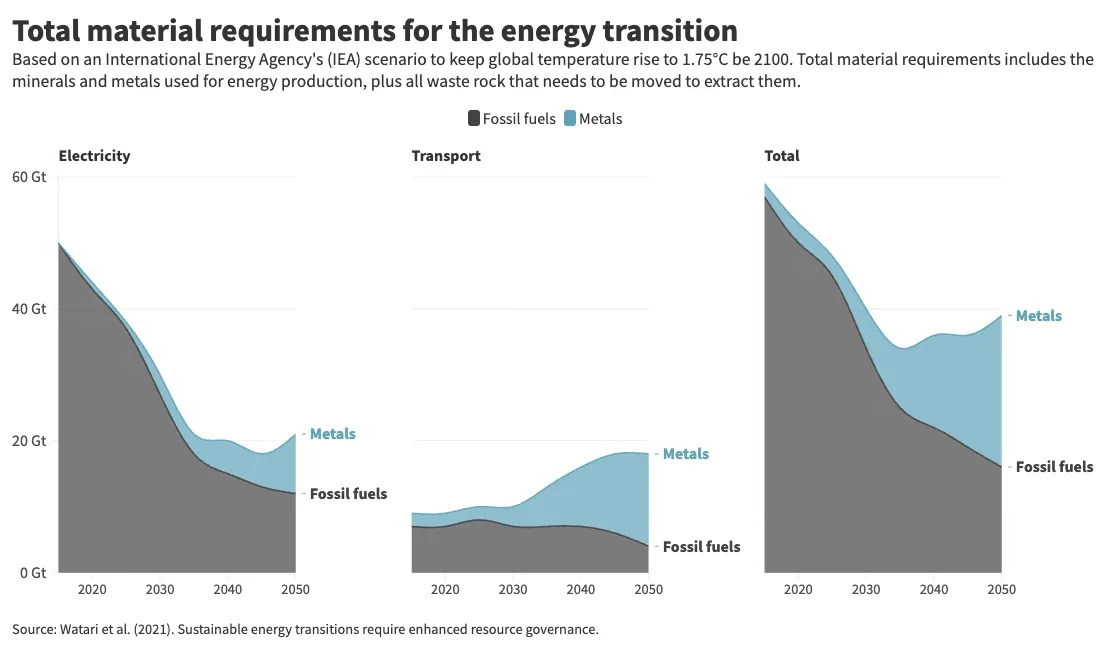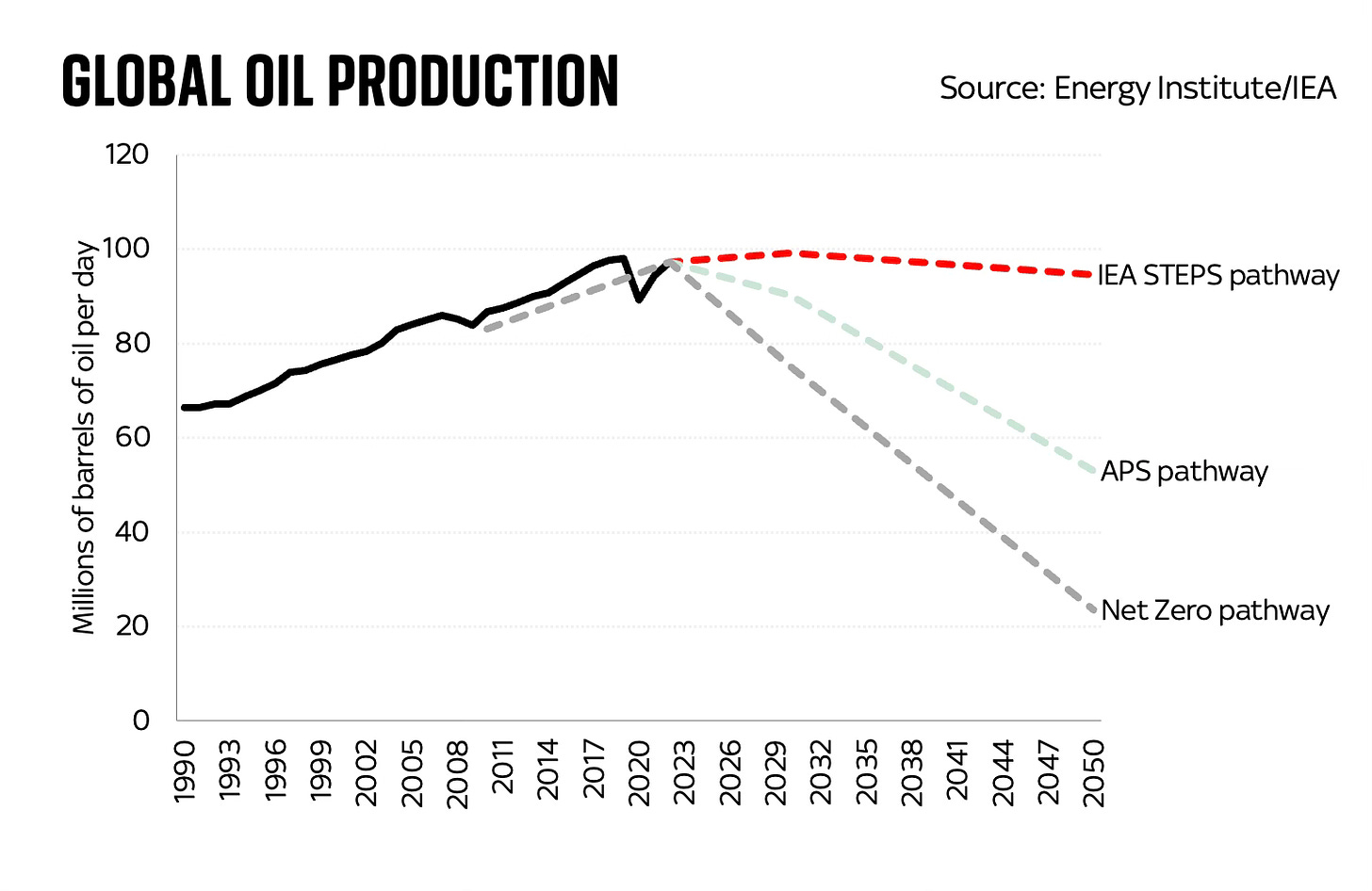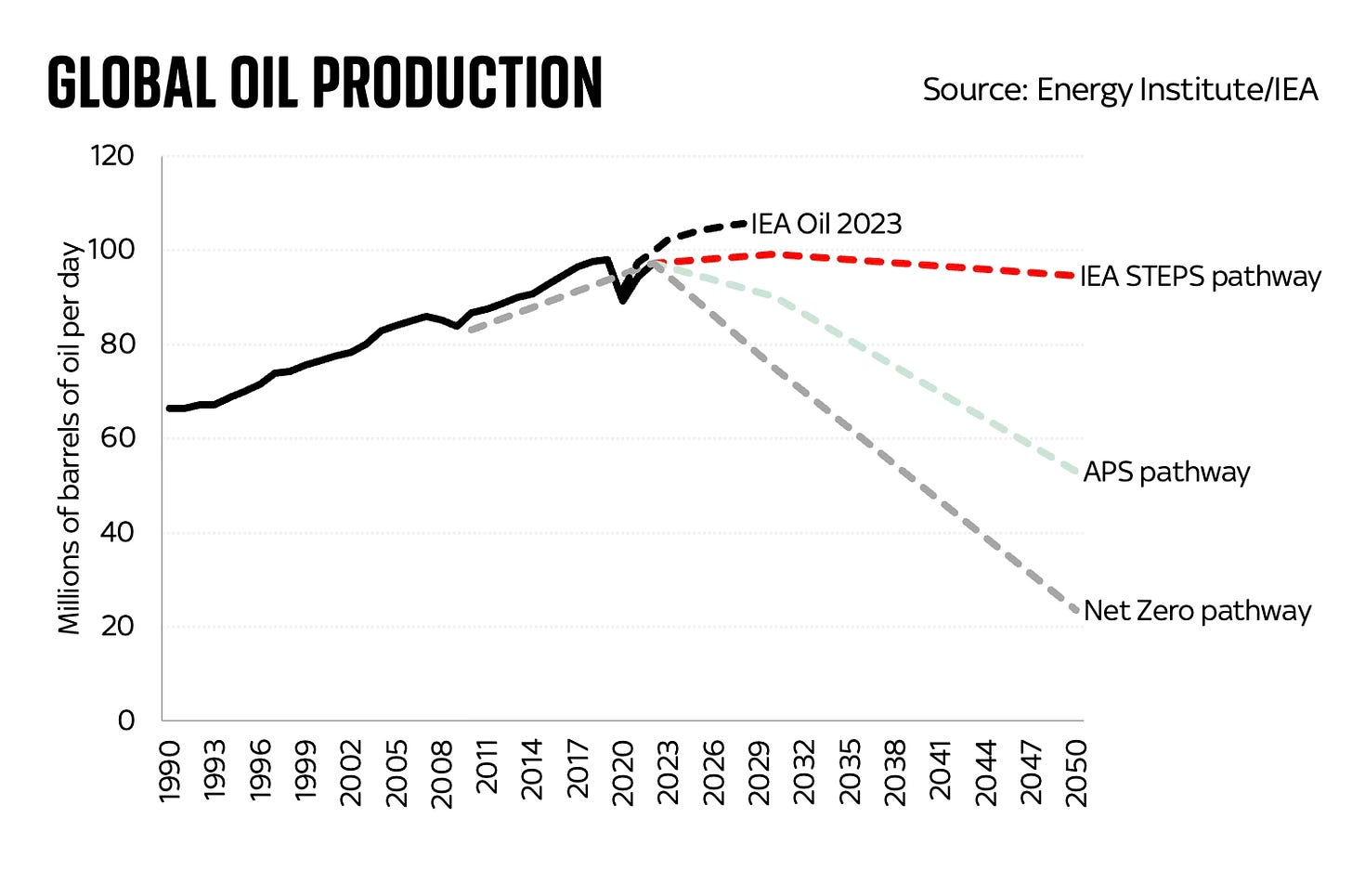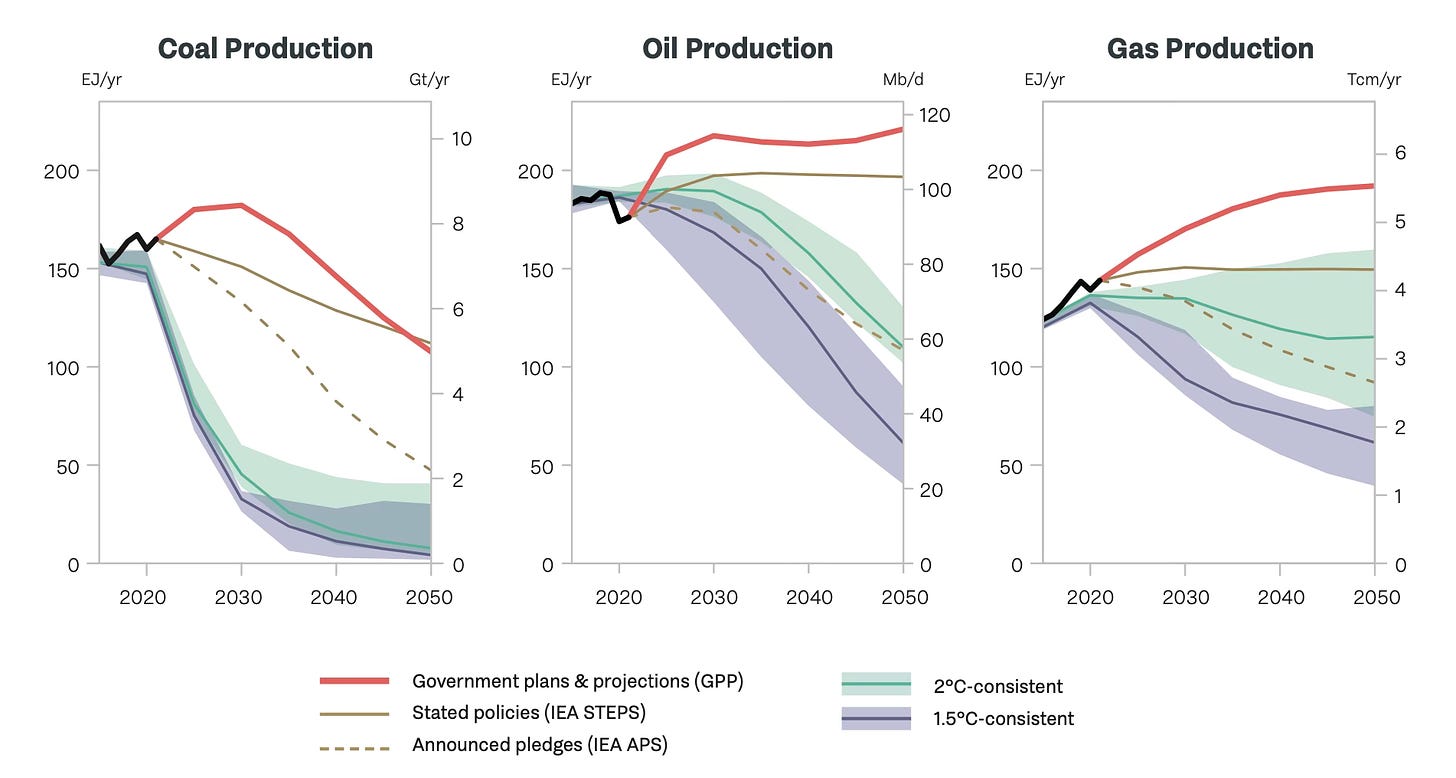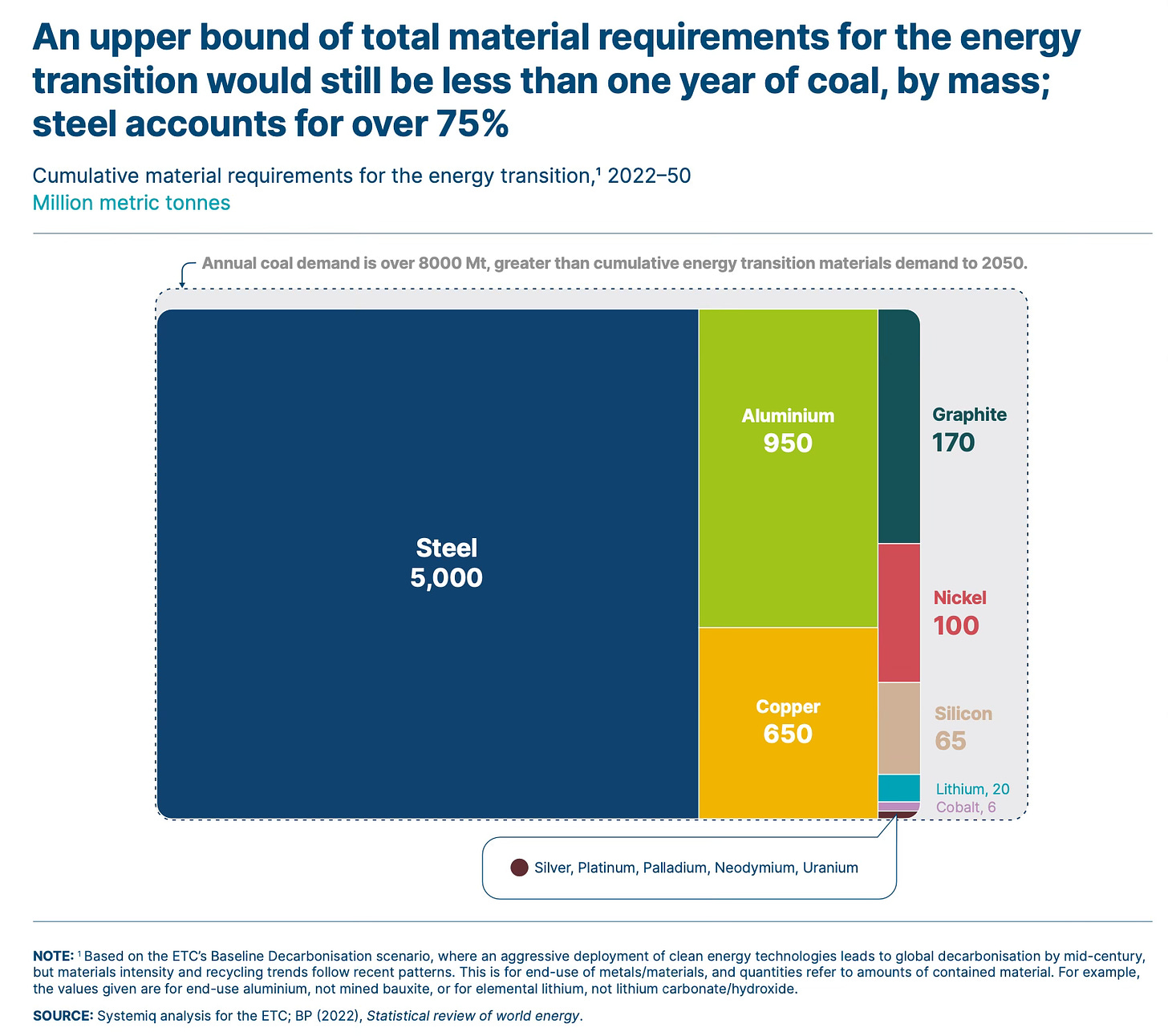When Idiot Savants Do Climate Economics. Christopher Ketcham, The Intercept. Oct. 29, 2023.
How an elite clique of math-addled economists hijacked climate policy.
WILLIAM NORDHAUS, WHO turned 82 this year, was the first economist in our time to attempt to quantify the cost of climate change. His climate-modeling wizardry, which won him the Nobel Memorial Prize in Economic Sciences in 2018, has made him one of the world’s most consequential thinkers. His ideas have been adopted by the Intergovernmental Panel on Climate Change, the U.S. Environmental Protection Agency, global risk managers, the financial services industry, and universities worldwide that teach climate economics. Nordhaus’s work literally could affect the lives of billions of people. This is because his quantification of the immediate costs of climate action — as balanced against the long-term economic harms of not acting — is the basis of key proposals to mitigate carbon emissions. It’s not an exaggeration to suggest that the fate of nations and a sizable portion of humanity depends on whether his projections are correct.
The Intergovernmental Panel on Climate Change has assumed Nordhaus is to be trusted. The integrated assessment models used at the IPCC are based on Nordhausian visions of adaptation to warming that only marginally reduces global gross domestic product. If future GDP is barely affected by rising temperatures, there’s less incentive for world governments to act now to reduce emissions.
Nordaus’s models tell us that at a temperature rise somewhere between 2.7 and 3.5 degrees Celsius, the global economy reaches “optimal” adaptation. What’s optimal in this scenario is that fossil fuels can continue to be burned late into the 21st century, powering economic growth, jobs, and innovation. Humanity, asserts Nordhaus, can adapt to such warming with modest infrastructure investments, gradual social change, and, in wealthy developed countries, little sacrifice. All the while, the world economy expands with the spewing of more carbon.
His models, it turns out, are fatally flawed, and a growing number of Nordhaus’s colleagues are repudiating his work. Joseph Stiglitz, former World Bank chief economist and professor of economics at Columbia University, told me recently that Nordhaus’s projections are “wildly wrong.” Stiglitz singled out as especially bizarre the idea that optimization of the world economy would occur at 3.5 C warming, which physical scientists say would produce global chaos and a kind of climate genocide in the poorest and most vulnerable nations.
In a journal article published last year, Stiglitz and co-authors Nicholas Stern and Charlotte Taylor, of the Grantham Research Institute on Climate Change and the Environment at the London School of Economics and Political Science, declared that Nordhausian integrated assessment models are “inadequate to capture deep uncertainty and extreme risk.” They fail to incorporate “potential loss of lives and livelihoods on immense scale and fundamental transformation and destruction of our natural environment.”
Climate change is one of the instances, Stiglitz and Stern told me in an email, in which “it is generally agreed there is extreme risk — we know there are some really extreme events that could occur — and we know we cannot pretend (i.e., act as if) we know the probabilities. Nordhaus’s work doesn’t appropriately take into account either extreme risk or deep uncertainty.”
In other words, the economist who has been embraced as a guiding light by the global institution tasked with shepherding humanity through the climate crisis, who has been awarded a Nobel for climate costing, who is widely feted as the doyen of his field, doesn’t know what he’s talking about.
AMONG MOST SCIENTISTS, it’s lunacy to discuss optimization of anything anywhere when the globe hits even 2 C warming. Climate researchers Yangyang Xu and Veerabhadran Ramanathan, in a widely cited 2017 paper, defined 1.5 C warming as “dangerous” and 3 C or greater as “catastrophic,” while above 5 C was “beyond catastrophic,” with consequences that include “existential threats.” The late Will Steffen, a pioneering Earth systems thinker, warned alongside many of his colleagues that 2 C was a critical marker. At 2 C warming, we could “activate other tipping elements in a domino-like cascade that could take the Earth system to even higher temperatures.” [actually, we already have] Such “tipping cascades” could lead quickly to “conditions that would be inhospitable to current human societies,” a scenario known as hothouse Earth.
But the path to hothouse Earth will be long and tortured. When I interviewed him in 2021, Steffen, who died last January at age 75, was concerned about “near-term collapse” of the global food system. Drought and heat have already reduced global cereal production by as much as 10 percent in recent years, according to Steffen. “Food shocks are likely to get much worse,” he wrote in a 2019 piece co-authored with Aled Jones, director of the Global Sustainability Institute at Anglia Ruskin University. “The risk of multi-breadbasket failure is increasing, and rises much faster beyond 1.5 C of global heating. … Such shocks pose grave threats — rocketing food prices, civil unrest, major financial losses, starvation, and death.”
In a 2022 report titled “Climate Endgame: Exploring Catastrophic Climate Change Scenarios,” 11 leading Earth systems and climate scientists, Steffen among them, concluded there is “ample evidence that climate change could become catastrophic … at even modest levels of warming.” According to the report:
Climate change could exacerbate vulnerabilities and cause multiple, indirect stresses (such as economic damage, loss of land, and water and food insecurity) that coalesce into system-wide synchronous failures. … It is plausible that a sudden shift in climate could trigger systems failures that unravel societies across the globe.
What these scientists are describing is global civilizational collapse, possibly in the lifetime of a young or even middle-aged reader of this article.
According to the “Climate Endgame” report, the current trajectory of carbon emissions puts the world on track for a temperature rise between 2.1 C and 3.9 C by 2100. This is a horrific prospect. Earth systems analysts tell us that habitable and cultivable land in a 3 C to 4 C warming regime would be so reduced and ecosystem services so battered that the deaths of billions of people could occur in the next eight decades or less.
Terrible numbers get thrown around. But scientists mean what they say. Kevin Anderson, professor of energy and climate change at the University of Manchester in the U.K. and Uppsala University in Sweden, asserts that “something like 10 percent of the planet’s population — around half a billion people — will survive if global temperatures rise by 4 C.” He notes, with a modicum of hopefulness, that we “will not make all human beings extinct as a few people with the right sort of resources may put themselves in the right parts of the world and survive. But I think it’s extremely unlikely that we wouldn’t have mass death at 4 C.”
Johan Rockström, director of the Potsdam Institute for Climate Impact Research in Germany and a leading researcher on climate tipping points and “safe boundaries” for humanity, projects that in a 4 C warmer world, “it’s difficult to see how we could accommodate a billion people or even half of that.” Global population today stands at 7.6 billion, with 80 million people added every year.
By contrast, when Nordhaus looked at the effects of 6 C warming, he did not forecast horror. Instead, we should expect “damages” of between 8.5 percent and 12.5 percent of world GDP over the course of the 21st century. Writing in the Economic Journal, Stern set Nordhaus straight in the harshest terms: “We could see deaths on a huge scale, migration of billions of people, and severe conflicts around the world,” he wrote. “It is profoundly implausible that numbers around 10 percent of GDP offer a sensible description of the kind of disruption and catastrophe that 6 C of warming could cause.”
In an email to The Intercept, Nordhaus characterized his colleagues’ critiques as “a distorted and inaccurate description of the work and my views. I have long supported carbon pricing and climate-focused [research and development], which are key to slowing climate change. The proposals in my writings have pointed to targets that are FAR more ambitious than current policies.” He declined to elaborate on any distortions or inaccuracies.
TO UNDERSTAND THE gap between climate scientists and climate economists, one must first understand that most economists — the folks we call mainstream or neoclassical economists — have little knowledge of or interest in how things really work on planet Earth. The problem of their ecological benightedness starts as a matter of training at university, where a typical undergraduate course in economics prepares students for a lifetime of abject ignorance about the complex underpinnings of the thing called the “market.”
Start with your typical textbook for the dismal science — say, the definitive one by Paul Samuelson, co-written with Nordhaus, titled “Economics.” The book is considered “the standard-bearer” of “modern economics principles.” You’ll find in its pages a circular flow diagram that shows “households” and “firms” exchanging money and goods. This is called the market. Households are the owners of land, labor, and capital, which they sell to firms for the manufacture of goods. Households then buy the goods, enriching firms, which allows the firms to buy more land, labor, and capital, enriching households. The quantity in the flow diagram, in ideal circumstances, is ever expanding: The profits of firms grow and so does the income of households.
A simple, imperturbable closed system that’s also ludicrous, fantastical, a fairy tale. In the circular flow diagram of standard economics, nothing enters from the outside to keep it flowing, and nothing exits as a result of the flow. There are no resource inputs from the environment: no oil, coal, or natural gas, no minerals and metals, no water, soil, or food. There are no outputs into the ecosphere: no garbage, no pollution, no greenhouse gasses. That’s because in the circular flow diagram, there is no ecosphere, no environment. The economy is seen as a self-renewing, perpetual-motion merry-go-round set in a vacuum.
“I taught that foolish little diagram to undergraduates at Louisiana State University for 30 years,” the late Herman Daly, one of the 20th century’s great dissenters from standard economics, told me in an interview before his death at age 84 last year. “I thought it was just great. I was well beyond a Ph.D. before it came crashing in on my head that this is a very bad paradigm.”
In the 1970s, working at the University of Maryland, Daly pioneered the field of ecological economics, which models the biophysical reality that delimits all economies. “The human economy,” wrote Daly, “is a fully contained wholly dependent growing subsystem of the non-growing ecosphere” — a commonsense observation that amounted to heresy in mainstream economics. Daly emphasized that the economy depends on nonrenewable resources that are always subject to depletion and a functioning biosphere whose limits need to be respected. His most important contribution to the literature of this renegade economics was his famous (in some circles, infamous) “steady state” model that accounts for biophysical limits to growth. Daly paid the price of heterodoxy. His fellow economists declared him an apostate.
E.F. Schumacher arrived at similar conclusions about mainstream economics in his 1973 book “Small Is Beautiful,” which became a bestseller. “It is inherent in the methodology of economics to ignore man’s dependence on the natural world,” Schumacher wrote, the emphasis his. Economics, said Schumacher, only touches the “surface of society.” It has no capacity to probe the depths of the systemic interactions between civilization and the planet. Faced with the “pressing problems of the times” — the negative environmental effects of growth — economics acts “as a most effective barrier against the understanding of these problems, owing to its addiction to purely quantitative analysis and its timorous refusal to look into the real nature of things.”
Purely quantitative analysis is the amphetamine of the mainstream economist. The steady dosing keeps his pencil sharp and his eyes blind. It has not gone unnoticed that graduate schools produce a kind of ingenious hollowness in economists who race to the finish on the schools’ assembly line. As early as 1991, a report from a commission on “graduate education in economics” warned that the university system in the United States was churning out “too many idiot savants,” economists “skilled in technique but innocent of real economic issues” — unable, that is, to look into the real nature of things.
BY WHAT MATHEMAGICAL sorcery has Nordhaus, celebrated member of the Ivy League elite, arrived at projections that are so out of line with those of climate scientists?
The answer is in something called DICE, the mother of integrated assessment models for climate costing. It stands for dynamic integrated climate-economy. Nordhaus formulated DICE for the first time in 1992 and updated it most recently last year.
In DICE, the effect of a warmed climate is measured solely as a percentage loss (or gain) in GDP. Growth of GDP is assumed to be “exogenously determined,” in the language of economics theory, meaning it will persist at a set rate over time regardless of climate shocks. Earth systems scientists will tell you that to assume exogenously determined growth is the height of hubristic arrogance. By contrast, Nordhaus assures us in his DICE model that growth continues like a cruising Cadillac on the California coast with an occasional pothole. But the reality is rainstorms, mudslides, earthquakes, and other drivers on the road.
This blithe presumption of constant growth in a climate-damaged future is the first of Nordhaus’s errors, as Stern and Stiglitz point out. “Nordhaus’s model doesn’t fully take into account the fact that if we don’t do more to avert climate change, climate change will affect growth rates,” they told me in an email. “We will have to spend more and more repairing damage, leaving us less and less to spend on growth-enhancing investments.” And, they add, some outcomes arising from weak climate action could profoundly alter what is possible in terms of economic activity. Extreme heat, submergence, desertification, hurricanes, and so on: Such weather events and broad climatic shifts could render large areas of the world low productivity, unproductive, or uninhabitable.
The second of Nordhaus’s errors is the use of reductionist mathematical formulas. He employs something called a quadratic to calculate the relationship between rising temperatures and economic outcomes. Among the properties of a quadratic is that it permits no discontinuities; there are no points at which the relationship implied by the function breaks down. But smooth functions chart smooth progressions, and climate change will be anything but smooth. Such calculations do not account for extreme weather, vector-borne diseases, displacement and migration, international and local conflict, mass morbidity and mortality, biodiversity crash, state fragility, or food, fuel, and water shortages. There’s no measurement of amplifying feedbacks and tipping points such as Arctic sea ice loss, shutdown of vital ocean currents, collapse of the Amazon, and the like.
The third of Nordhaus’s errors is related to similarly simplistic formulas. Nordhaus calculates GDP of a particular location as fundamentally related to the temperature of that place. So, if in 2023 it’s a certain temperature in London, and the GDP in London is such-and-such, it’s reasonable to assume that when latitudes north of London rise in temperature in the future, GDP will rise to be the same as London’s today. Make of this what you will — it’s foolishness on a grand scale, and yet it’s central to the Nordhaus model.
The fourth fatal error Nordhaus makes is the most farcical. In a 1991 paper that became a touchstone for all his later work, he assumed that, because 87 percent of GDP occurs in what he called “carefully controlled environments” — otherwise known as “indoors” — it will not be affected by climate. Nordhaus’s list of the indoor activities free of any effects from climate disruption include manufacturing, mining, transportation, communication, finance, insurance, real estate, trade, private sector services, and government services. Nordhaus appears to be conflating weather with climate. The one can make trouble for outdoor dining plans on your yacht. The other sinks the yacht.
Ignorance of systems has its way of plowing forward, juggernaut-like. Nordhaus has opined that agriculture is “the part of the economy that is sensitive to climate change,” but because it accounts for just 3 percent of national output, climate disruption of food production cannot produce a “very large effect on the U.S. economy.” It is unfortunate for his calculations that agriculture is the foundation on which the other 97 percent of GDP depends. Without food — strange that one needs to reiterate this — there is no economy, no society, no civilization. Yet Nordhaus treats agriculture as indifferently fungible.
This crude mess of a model is what won him the Nobel. “It shows how little quality control goes into selecting a winner in economics that he was even nominated for the prize,” Steve Keen, a research fellow at University College London and self-described renegade economist, told me. Keen has authored numerous books that question the orthodoxy of mainstream economics. He was an early critic of the integrated assessment models at the IPCC that owe their optimistic sheen to Nordhaus’s methodology. His caustic 2021 essay, “The Appallingly Bad Neoclassical Economics of Climate Change,” delved into the problems of Nordhausian models.
“Any investigative journalist who overcame a fear of equations and simply read Nordhaus’s texts would have known that his work was nonsense,” Keen told me. “Assuming that 87 percent of the economy would be ‘negligibly affected by climate change’ because it takes place in ‘carefully controlled environments’?”
“When it comes to climate,” Keen said, “the guy is an idiot: an idiot savant, but still fundamentally an idiot.”
And it’s not just Nordhaus. Climate economists have followed dutifully in his footsteps and come up with cost models that appear to have no relationship with known laws of physics, the dynamics of climate, or the complexities of Earth systems.
A 2016 study by economists David Anthoff of University of California, Berkeley; Francisco Estrada of the Institute for Environmental Studies in Amsterdam; and Richard Tol of the University of Sussex offers one of the more egregious examples of Nordhausian nonsense. (Tol is one of Nordhaus’s protégés, and Nordhaus is listed as a reviewer of the paper.) The three academics boldly assert that shutdown of the Atlantic meridional overturning circulation, or AMOC — a pivotally important Earth system that loops warm equatorial water toward the Arctic and cold water back south — could have beneficial effects on the European economy.
Over the last several thousand years, the AMOC, also known as the thermohaline circulation, has functioned to keep Europe relatively warm in winter because of the warm water it draws northward from the equator. The slowing and eventual shutdown of this system could plunge Europe and broad parts of the Northern Hemisphere into extreme cold. Such a shutdown is a growing likelihood as glacial melt pours into the North Atlantic and alters the delicate balance of salt water and fresh water that drives the looping current.
For Tol, Anthoff, and Estrada, however, collapse of one of the Earth systems that undergirds the climatic stability of the Holocene might be a good thing. “If the [AMOC] slows down a little, the global impact is a positive 0.2-0.3 percent of income,” they concluded. “This goes up to 1.3 percent for a more pronounced slowdown.” They argued that while climate heating cooks the rest of the world, European countries will benefit from a cooling effect of the current’s collapse.
This sunny assessment comes as a surprise to James Hansen, father of climate science, who has calculated that a massive temperature differential between the poles and the equator would occur with an AMOC shutdown, producing superstorms of immense fury across the Atlantic Ocean. According to Hansen, the last time Earth experienced those kinds of temperature differentials, during the interglacial Eemian era roughly 120,000 years ago, raging tempests deposited house-sized boulders on coastlines in Europe and the Caribbean. Waves from the storms were estimated to have surged inland to 40 meters above sea level.
Under these extreme conditions, what would happen to shipping lanes, coastal cities and ports, and trans-Atlantic traffic of all kinds? For the climate simpletons Tol, Anthoff, and Estrada, the question doesn’t come up. “It will be a helluva lot stormier on the North Atlantic, especially for Europeans,” Hansen told me in an email. His study team concluded that shutdown of AMOC “is in the cards this century, possibly by mid-century, with continued high emissions.”
It gets worse. Simon Dietz, at the London School of Economics and Political Science, and his fellow economists James Rising, Thomas Stoerk, and Gernot Wagner have offered some of the most ignorant visions of our climate future, using Nordhausian math models. They examined the consequences to GDP of hitting eight Earth system tipping points that climate scientists have identified as existential threats to industrial civilization. The tipping points are as familiar as a funeral litany to anybody schooled in climate literature: loss of Arctic summer ice; loss of the Amazon rainforest; loss of the Greenland and West Antarctic ice sheets; release of ocean methane hydrates; release of carbon in permafrost; collapse of the AMOC; and collapse of the Indian monsoon.
Dietz and friends came to the astounding conclusion that if all eight were tipped, the economic cost by 2100 would amount to an additional 1.4 percent of lost GDP on top of the roughly 8 to 12 percent that Nordhaus projected.
Think of this projection in commonsense terms: A negligible effect on world affairs when the Arctic during summer is deep blue rather than white; when the jungle of the Amazon is no longer green but brown savannah or desert; when in Greenland and the West Antarctic, white ice is barren rock. A transformation of immense proportions on the Earth’s surface, in the atmosphere, and in terrestrial biotic communities. Ocean methane hydrates have an energy content that exceeds that of all other fossil fuel deposits. Permafrost holds an amount of carbon roughly twice the current carbon content of the atmosphere. With the weakening or collapse of the AMOC, Europe could be plunged into conditions akin to the Little Ice Age, with drastic reduction of the land area suitable for wheat and corn farming. Increased variability of the Indian monsoon would jeopardize the lives of over a billion people.
“The claim that these changes would have effectively zero impact upon the human economy is extraordinary,” wrote Keen. The reality is that if all eight Earth system tipping points were reached, humanity would be in terrible trouble.
AN UNCHARITABLE VIEW of the work of climate economists in the Nordhaus school is that they offer a kind of sociopathy as policy prescription. Nordhaus estimates that as economic activity heads poleward with warming, the massive reduction in GDP in the tropics will be offset by optimal adaptation in the Global North. “Massive reduction in GDP,” of course, is not explicitly understood by Nordhaus as food system collapse across the equator, followed by social collapse, mass death, wars, and biblical exoduses that produce cascading nonlinear effects drawing the world into a nexus of unknowns.
Nothing to worry about, assures Nordhaus: The violent extinction of low-GDP nations will hardly affect the outlook for economic growth because things will improve in the cold Global North. This is an embrace of imagined silver linings in a climate genocide.
Do governments, policymakers, and the public have any clue that the message from climate economist elites is unhinged? So far, we have followed along in the belief that all is well. One of the better indicators of this lemming-like fealty to a narrative of delusory optimism is in the financial sector.
Keen authored a report for investors this year in which he noted that pension funds have swallowed whole the Nordhausian projections of our sunny future as the climate system collapses. “Following the advice of investment consultants, pension funds have informed their members that global warming of 2-4.3 C will have only a minimal impact upon their portfolios,” Keen wrote. “This results in a huge disconnect between what scientists expect from global warming, and what pensioners/investors/financial systems are prepared for.” Keen does not expect things to end well for investors.
When I asked him what needed to be done to alter policy at the IPCC, Keen replied, “We need everyone to be as angry as I am.” Negligence by economists like Nordhaus, he said, “will end up killing billions of people.”
Andrew Glikson, who teaches at Australian National University in Canberra and advises the IPCC, has written about the coming era of mass human death, what he calls the Plutocene, the natural successor to the Anthropocene. Global governments, he charges, are “criminals” for ushering in the Plutocene in pursuit of short-term political and economic gain. I first reached out to him during the black summer of bushfires that raged across Australia in 2020. Glikson’s mood was foul then, and it has not gotten better since.
“The governing classes have given up on the survival of numerous species and future generations,” he told me, “and their inaction constitutes the ultimate crime against life on Earth.” Part of the reason for inaction is the false cheer that Nordhaus has spread with his math-genius, climate-idiot models.
